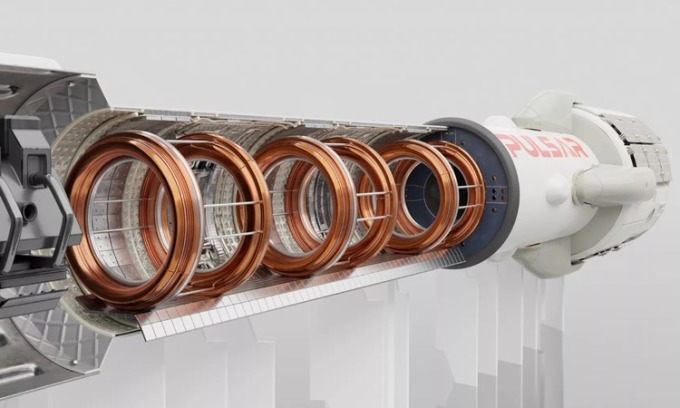However, the tech needs ultra-high temperatures and pressures to function. To help prove the viability of the technology, the largest-ever fusion rocket engine is now being built by Pulsar Fusion in Bletchley, the UK. The chamber, some 8 meters long, is scheduled to start firing in 2027.

Replicating the Sun inside a rocket isn’t easy. At the center of nuclear fusion propulsion is an ultra-hot plasma locked inside an electromagnetic field, and scientists are continuing to figure out how to do this in a stable and safe way.
Pulsar Fusion has partnered with Princeton Satellite Systems in the US to use supercomputer algorithms to better predict how the plasma is likely to behave, and how it might be more precisely controlled.
If scientists are able to get everything functioning as intended, temperatures of several hundred million degrees will be reached in the chamber, making it hotter than the Sun. The surplus energy released could potentially drive rocket speeds of 804,672 kilometers per hour.
The particular type of engine is a Direct Fusion Drive (DFD), in which the charged particles create thrust directly, rather than converting it into electricity. It’s more efficient than other options, and as it’s powered by atomic isotopes, doesn’t need a huge fuel payload.
As well as making round trips to planets much shorter, nuclear fusion also promises to provide almost unlimited, clean energy for life here on Earth.
However, scientists think it’ll be demonstrated in space first, where the lack of any atmosphere and the ultra-cold temperatures are more conducive to reactions.
According to sciencealert














